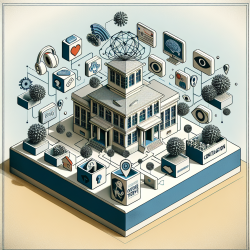Revolutionizing Autism Therapy: The Mixed Behavioral Model
In the quest to improve therapeutic outcomes for individuals with autism spectrum disorder (ASD), recent research has highlighted the significant benefits of combining discrete trial training, mass trials, and naturalistic environment training. This mixed behavioral model, evaluated through a repeated measures design, offers a promising approach to enhancing the development of autistic individuals, particularly in mastering broad target behaviors.
Understanding the Research
The study titled Examining the Effects of Discrete Trials, Mass Trials, and Naturalistic Environment Training on Autistic Individuals Using Repeated Measures provides a comprehensive analysis of this mixed model. Conducted over a three-month period with 93 participants, the research utilized a repeated measures design to assess the effectiveness of these interventions.
Key Findings
- Statistical Significance: The study revealed a statistically significant improvement in target behaviors across all age groups, with the most pronounced effects observed in adolescents aged 13-16 years.
- Large Effect Size: The results indicated a large effect size, emphasizing the substantial impact of the mixed model on behavioral outcomes.
- Interaction Effects: A significant interaction effect was found between time and age category, suggesting that age-specific adaptations of the model could further enhance its effectiveness.
Why Practitioners Should Take Note
The implications of this research are profound for practitioners in the field of autism therapy. By integrating discrete trials, mass trials, and naturalistic environment training, therapists can offer a more comprehensive and effective intervention strategy. This approach not only aids in the acquisition of new skills but also promotes their generalization to real-world settings, a crucial factor in the success of autism therapy.
Encouraging Further Exploration
While the study offers compelling evidence for the mixed model's efficacy, it also highlights the need for further research. Practitioners are encouraged to delve deeper into the nuances of these interventions, exploring age-specific adaptations and long-term outcomes. By doing so, they can contribute to the ongoing evolution of evidence-based practices in autism therapy.
Conclusion
The integration of discrete trial training, mass trials, and naturalistic environment training represents a significant advancement in autism therapy. As practitioners, embracing this mixed model can lead to more effective interventions and improved outcomes for individuals with ASD. To stay at the forefront of therapeutic innovation, continuous exploration and adaptation of these methods are essential.
To read the original research paper, please follow this link: Examining the Effects of Discrete Trials, Mass Trials, and Naturalistic Environment Training on Autistic Individuals Using Repeated Measures.










